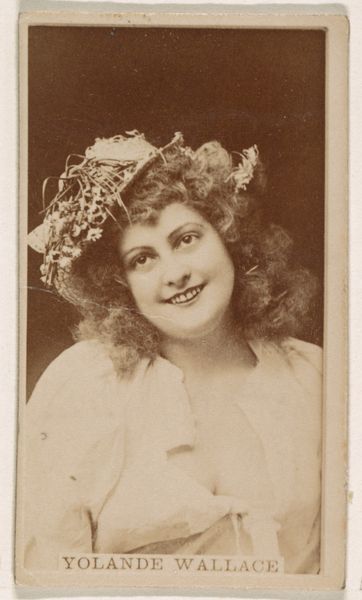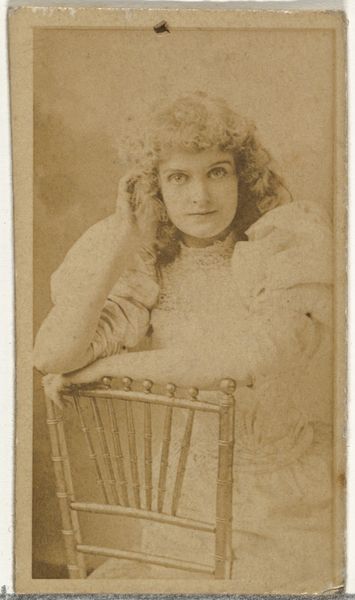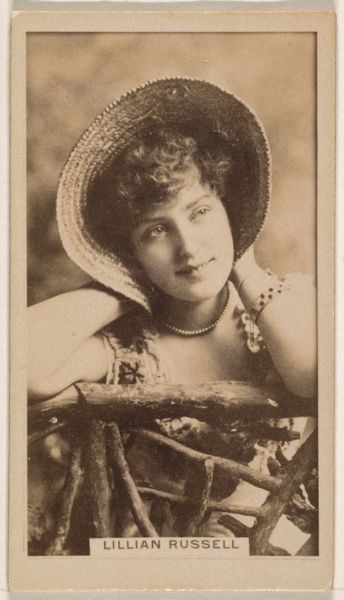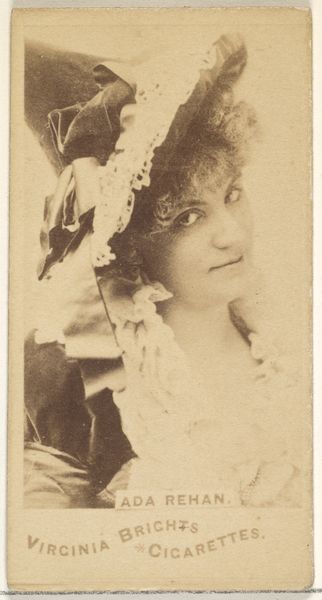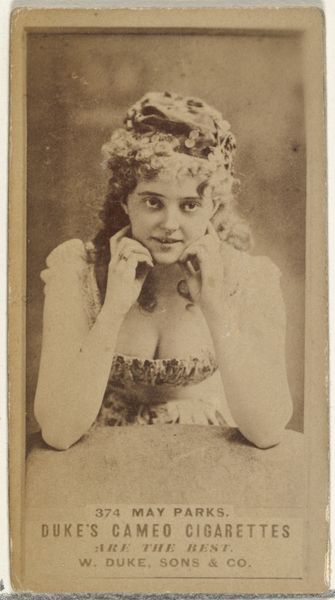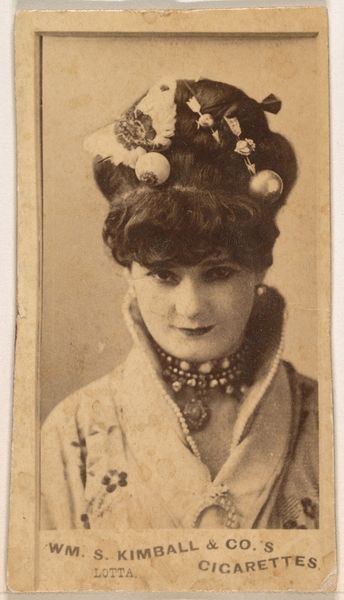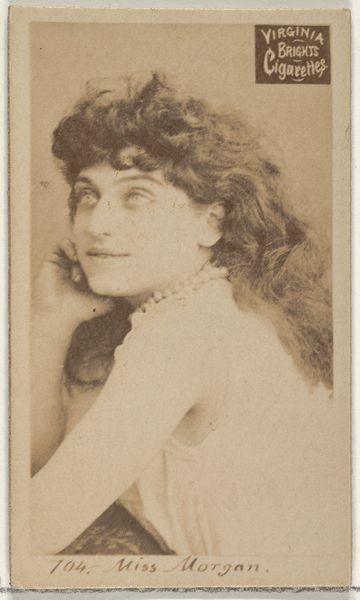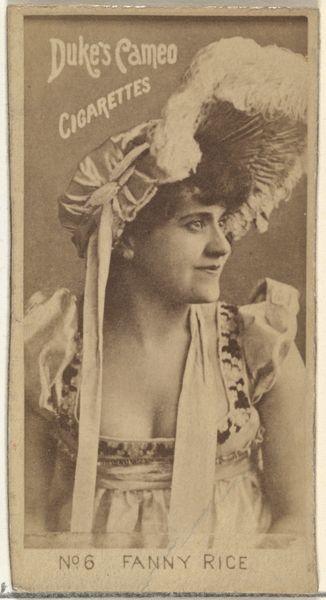
Lettie Meredith, from the Actresses series (N245) issued by Kinney Brothers to promote Sweet Caporal Cigarettes 1890
0:00
0:00
gelatin-silver-print, print, photography, gelatin-silver-print
#
portrait
#
gelatin-silver-print
# print
#
charcoal drawing
#
photography
#
gelatin-silver-print
Dimensions: Sheet: 2 1/2 × 1 7/16 in. (6.4 × 3.7 cm)
Copyright: Public Domain
Editor: Here we have a gelatin-silver print from 1890, "Lettie Meredith, from the Actresses series" by the Kinney Brothers Tobacco Company. It's so interesting to see a piece of advertising presented in a museum context. What draws your eye in this portrait? Curator: I'm immediately interested in the mass production element. This wasn't just art for art's sake, was it? The Kinney Brothers churned these out to sell cigarettes. The materiality, this specific type of print on thin card stock, speaks volumes about its intended purpose as a disposable commodity, a fleeting image circulated within a very specific economic system. Editor: So, the artistic merit is almost secondary to its function as advertising? Curator: Precisely. Consider the subject matter: Lettie Meredith, an actress. She is a product, used to sell another product. How does the means of representing this particular woman—the soft focus, the suggestive pose—tie into the consumption and objectification inherent in both the tobacco and entertainment industries of that time? The very making of this portrait involves a chain of laborers, from the photographer to the factory workers printing thousands of these. We’re seeing the tail end of that whole industrial process. Editor: I guess I hadn't really considered the sheer volume. So, thinking about all those prints, rapidly produced and widely distributed, changes how we should approach it, right? Curator: Absolutely. It disrupts this traditional view of photography as high art and individual expression. This image asks us to consider not just the image itself, but the entire material network it inhabited. How does the cheapness of the print contrast with the carefully cultivated image of glamour and sophistication meant to entice cigarette buyers? Editor: That's fascinating, I will never be able to look at trading cards the same way again. I hadn’t really considered the material life of images like this before. Curator: Indeed. And it opens up a new perspective to understanding similar pieces from this era.
Comments
No comments
Be the first to comment and join the conversation on the ultimate creative platform.
